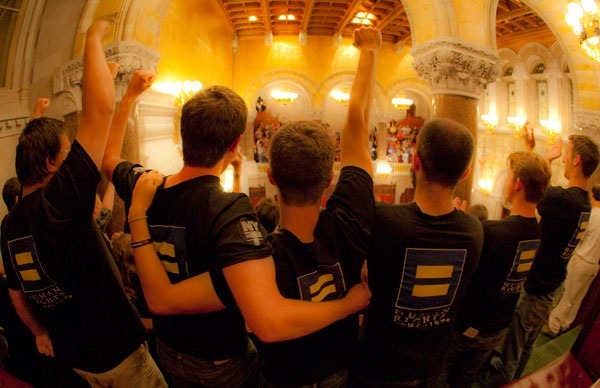
December 3, 2015; Windy City Times
The work of LGBT organizations is far from over. While LGBT (lesbian, gay, bisexual, transgender) social justice organizations still celebrate the Supreme Court’s decision to grant the freedom to marry to same-gender couples, in much of the USA, same-sex couples are not protected from discrimination and LGBT students are not protected from bullying. Only 19 states (plus Washington, D.C.) have comprehensive nondiscrimination laws.
A recently released research report, the 2015 National LGBT Movement Report, provides a financial report on the status of the leading organizations in the LGBT movement. The report breaks down fundraising, budgets, racial and ethnic diversity of staff, as well as other broad trends. The fiscal year examined in the report concluded prior to the Supreme Court decision in June 2015.
Movement Advancement Project, an independent think tank that provides research and analysis regarding LGBT issues, researched and produced the report. In collaboration with LGBT organizations, funders and advocates, MAP provides information and resources to help strengthen efforts regarding LGBT issues. Thirty-eight organizations participated, including 31 with budgets over $1 million and seven smaller organizations that were identified as working in areas critical to the LGBT movement. The participating organizations were classified into four categories: advocacy, legal, research and public education, and issue organizations. MAP identified the participating organizations through the GuideStar database.
Sign up for our free newsletters
Subscribe to NPQ's newsletters to have our top stories delivered directly to your inbox.
By signing up, you agree to our privacy policy and terms of use, and to receive messages from NPQ and our partners.
The key findings:
- Revenue: For the first time since the Great Recession of 2007–2008, the participating organizations report a decrease in revenue. Half of the participating organizations showed revenue declines, with the average experiencing 20 percent revenue decline. The largest source of revenue is the individual donor category, which equals 40 percent of cumulative revenue, with the foundation share at 14 percent.
- Expenses: For the first time in five years, expenses exceeded revenues.
- Other Financial Health indicators: General financial health is strong, with a reported average of six months of working reserves, an increase from 2013
- Fundraising: 81 percent of donated money is spent on programs, 10 percent on fundraising, and 9 percent on management and general expenses. According to the report, these percentages exceed the efficiency benchmarks set by the Better Business Bureau Wise Giving Alliance. Donations from foundations, bequests, and corporations decreased significantly, while this category grew across the nonprofit sector as a whole. From 2013 to 2014, there was an 18 percent decrease in foundation giving within the LGBT movement, compared to nationwide foundation giving increasing eight percent.
- Staff and Board Diversity: The racial and ethnic diversity of paid staff at the reporting organizations is similar to the overall population: 38 percent of paid staff identify as people of color compared to U.S. population with 38 percent. Forty-six percent of staff are women, and eight percent identify as transgender.
Many LGBT organizations have been redefining their work since the Supreme Court’s ruling in June 2015. Some organizations are closing due to a completed mission. Others are broadening their work to include expanded issues impacting LGBT people, such as economic insecurity.
What is the future for these LGBT organizations? The good news is the amazing LGBT movement successes of recent years. The challenges are to maintain relevance and continue momentum as the landscape quickly changes.—Jeanne Allen











